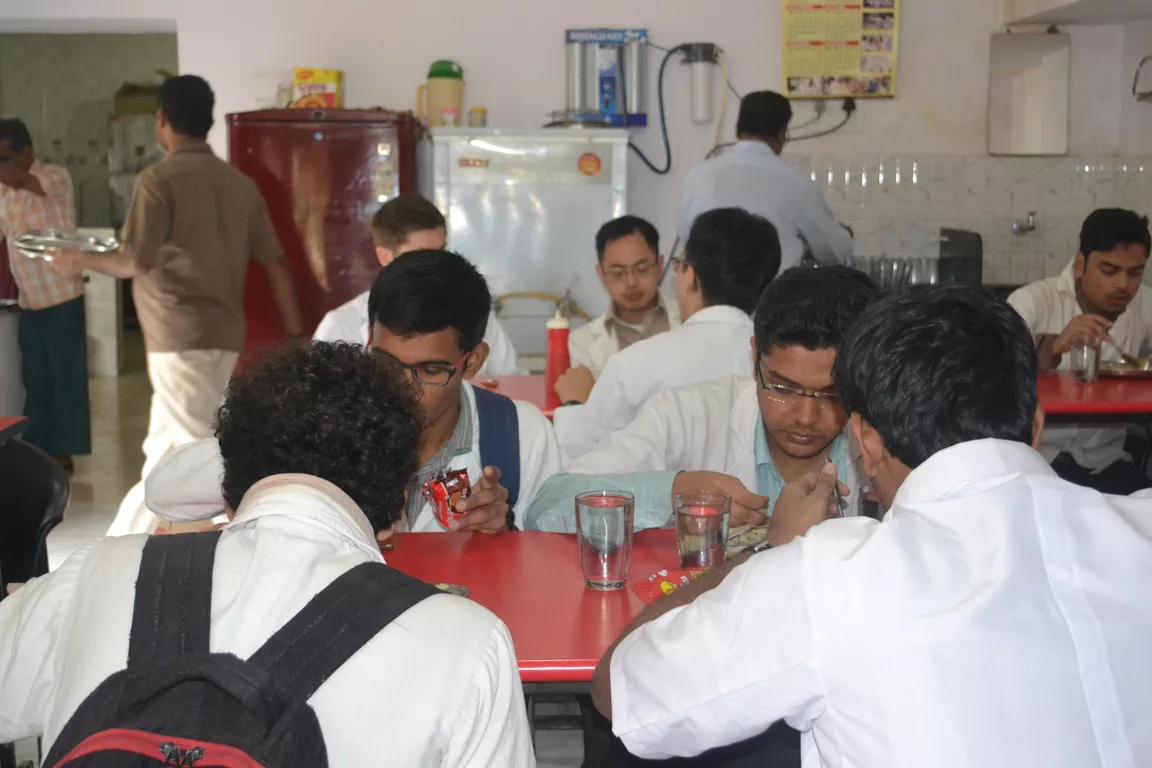
Have you had the pleasure of trying Domelette? It’s a delectable creation—an omelette perched atop a dosa. This delectable dish was quite popular amongst MGIMS medical students who craved something novel yet affordable and filling.
In the golden days of the 70s and the 80s, it’s just one of the many mouthwatering delights you could find at the India Coffee House in Sevagram. ICH for short.
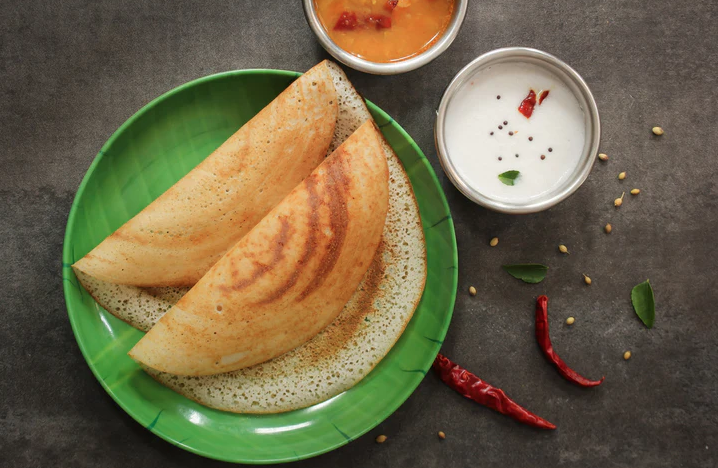
“Throwback to the good old days of the seventies when I was a medical student at MGIMS. After watching a late movie in Wardha, we’d head over to ICH for a budget-friendly and gratifying meal. Our go-to was the Domelette, an omelette served on a dosa. As soon as the waiter set it down on our table, we’d gobble it up in no time. The memory of that delectable omelette perched on a dosa, which left us feeling content without burning a hole in our pockets, is still fresh in my mind. Ah, the joys of being young, broke, and hungry!” Memories flooded the alumnus’s mind as he retraced the paths of his past when he came to his alma mater for the batch reunion.
The Evolution of ICH in Sevagram: A 48-Year Journey
Dr Kishore Shah, an Ob Gy Consultant located in Pune and an MGIMS class of 1974 alumnus, recounts a captivating story about the beginnings of ICH in Sevagram.
“There was a popular Riddle during our time. Why was such a tall wall built between the boys and the girls’ hostel?
The answer to that was: So that more customers would come to ICH.
Yes, ICH was the oasis between two barren deserts. On one side was the boy’s hostel and on the other, was the ladies’ hostel. In between was this fertile blooming land of romance, where sweet nothings were exchanged over a cup of coffee.
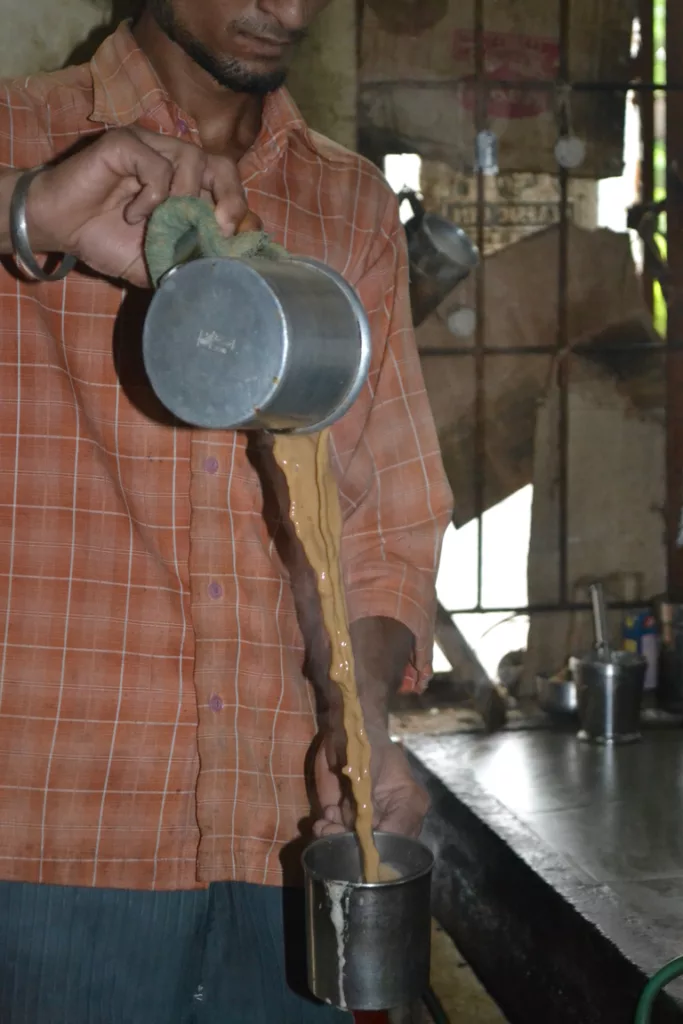
When we joined MGIMS in 1974, the ICH did not exist. There was a small hotel there called Anand Restaurant, but almost everybody identified it as the Sindhi Hotel, named after its owner who was Sindhi. In June 1973, Parmanand Adwani and Jethalal Jotwani established the hotel with the assistance of Pramila Upadhyay. The fat, bald, white-haired owner used to sit at the cash register and serve crisp samosas and hot tea; there was no other item on the menu. The Sindhi Hotel followed the same template as the other hotels in Sevagram at that time, including Babulal and Madras Hotel, all of which had rickety wooden tables and creaky chairs. A cup of tea cost 35 paise, and a samosa cost 50 paise.
Then, suddenly, out of the blue, the Sindhi Hotel closed down in February 1975, leaving us at the mercy of Babulal and Madras Hotel.
The largest benefit went to the Madras hotel. All students made a beeline to the Madras hotel and overnight they had a tripling of business. However, this was short-lived.
In March 1975, Professor GS Digmurthy, who served as the vice principal of MGIMS and also headed the Paediatrics department, accompanied Dr RN Shetty (Head of the Department of Anesthesiology) and Dr DT Kolte (Warden of the Boys’ Hostel) on a mission to explore the Indian Coffee House at Sadar and negotiate terms and conditions with Nagpur ICH Society. Despite making four trips to Nagpur for this task, he was denied reimbursement for his travel expenses because he had submitted them late to the management.
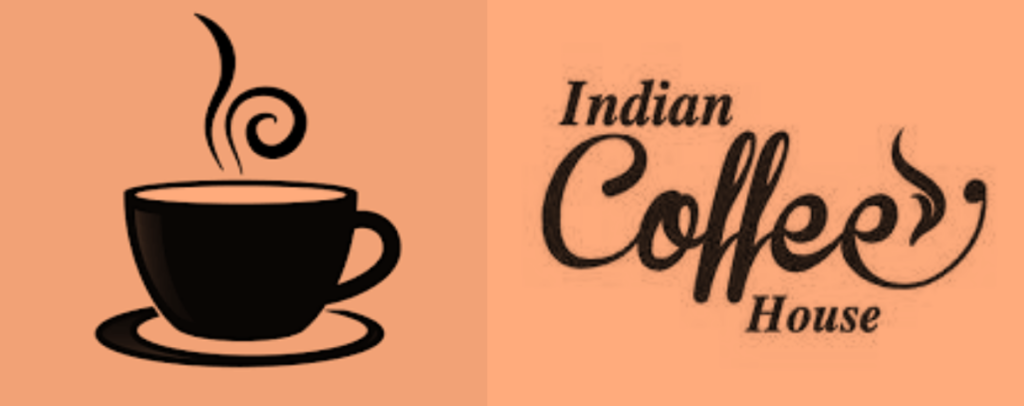
For six months, there was nothing there. Then suddenly, signs of life started appearing at the closed Sindhi hotel. On 25 July 1975, the ICH Co-Operative Society in Sadar, Nagpur entered an agreement with MGIMS to operate a cafeteria serving South Indian snacks and non-alcoholic beverages to students, staff, and employees. The canteen paid monthly rent of Rs 450 and operated from 7 am to 10 am, with a break in the afternoon. A board was put up. Shiny new words announced Indian Coffee house.
About two to three months after the renovation, the hotel started its business in 1975. For the first time in our life. We were served water in clean glasses. Tea was given in sparkling white China. The menu had more than 10 items. The only snag was that it cost us a bit more. Tea suddenly jumped up to 50 paise. The dosa was a princely one rupee and 25 paise. Surprise, surprise! Items like omelettes, bread and butter were also there. But the first time we saw waiters dressed in crisp white coats. And after our tea or breakfast, we were handed over small bills measuring. 1 ½ inch by 1 ½ inch almost as if we were royalty. Sparkling cutlery adorned Sevagram plates for the first time.
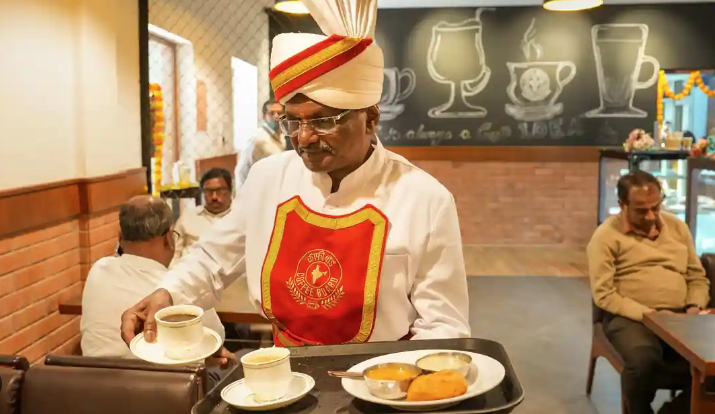
The Indian Coffee House was not just any ordinary food joint. It had a unique dress code hierarchy that added to its charm and made it a memorable experience for all who visited. The waiters were dressed in white shirts, white trousers, and khadi caps while the bearers wore green belts and turbans with green bands. The head bearer, who was easily identifiable, wore a turban with a red band and golden border, and a red patta or slash. The supervisors wore crisp cotton shirts and trousers. Every worker involved with the ICH must undergo the same rigorous process to advance to the top position.
Dr Hari Oam Ahuja, MGIMS class of 1974, reminisces that the first time he and his friends entered ICH, they wondered if they were walking into a five-star hotel in Sevagram.
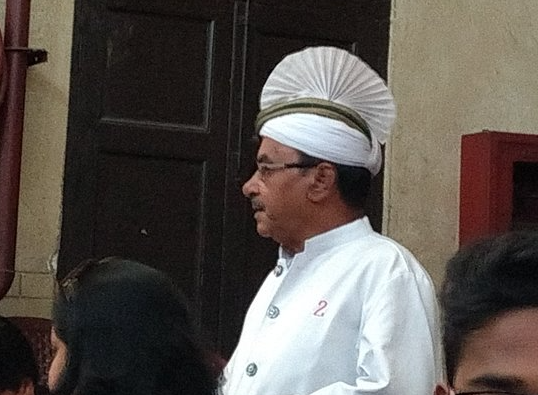
However, there was one thing missing from the new hotel. The staff were all from South India. So they were unfamiliar with the local Marathi or Hindi language. Due to the difficulties in communication, they seemed to be less friendly. However, they more than made up for this deficiency with, good clean service and tasty South Indian fare.
One tea cost us 50 paise. However, two teas. Cost us ₹1.00 and five paise. Because five paise was the service charge for any amount above 50 paise up to ₹ 1.50. This was the first time in my life that I was taught split invoicing. If you ordered separate teas, there was no surcharge. However, if we ordered tea together, we had to pay 5 paisa extra.
We had a peculiar waiter called Vishnu, in the early days. In today’s cyber terms, we would have called him a low-speed processor and small RAM. Whenever 2 or more guys gave him an order, he just remembered the last item and brought only that. Thus, if we ordered a dosa, idli, a Vada and a cold coffee, Vishnu would rush to the kitchen and bring only cold coffee. Thus, we had to repeat the order 3 more times to get everything. We called him Vishnu single naam, a parody of Vishnu सहस्त्र नाम.
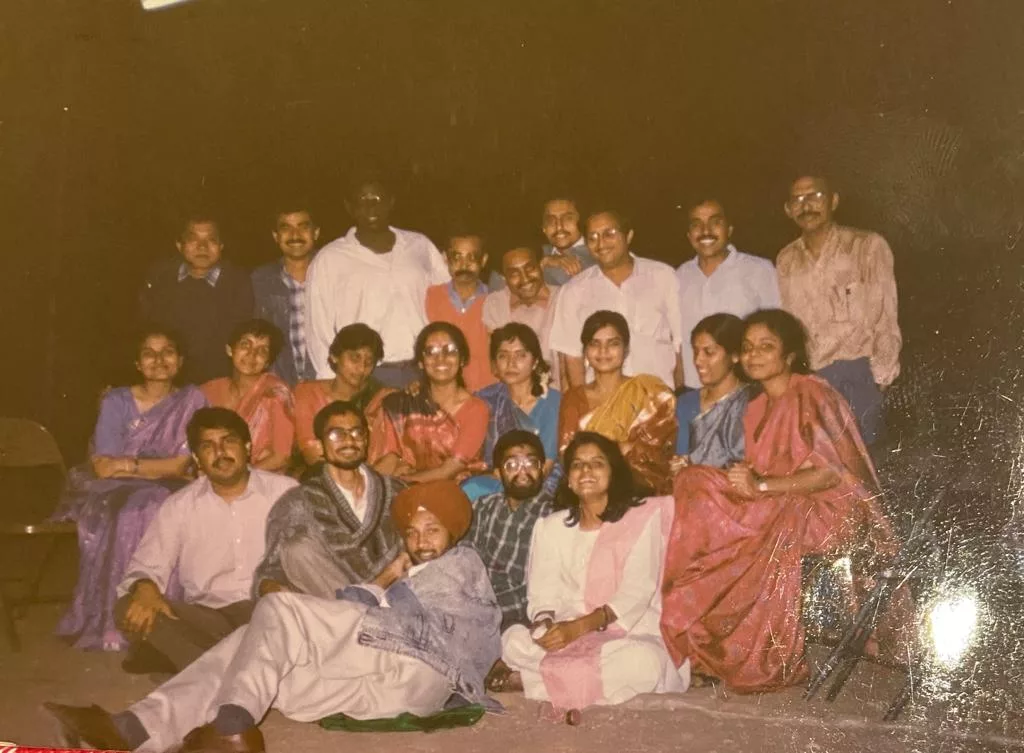
The one enduring image of ICH that is engraved in my mind is that of the Khadi gang. Sitting in the middle of the courtyard of the ICH sat Dr Tyagi and his beautiful wife Punam 72 batch. Punam was fond of Khadi jackets with beautiful embroidered designs. They were always accompanied by 5-6 of their friends. like Avinash Shankar and Premkumar Sinha.
Frequently late in the evening, the boss from our batch 74, Dr Deepak Fuljhale (we lost him in 2001), used to saunter in and sit stylishly at a table. Then, with a casual sweep of his hand, he would produce a cigarette from the thin air, just flick the cigarette in the air and grab it with his lips lightly. And then, almost like a religious ritual, he would brush the match against his high heels and gently light the tip of the cigarette. This was a performance not to be missed. Elegant, beautiful and mesmerising!
One particular ritual we followed was after winning heavily at a card game the previous night, we used to regally sway into the canteen and order a Domelette. This is basically a dosa with an omelette. But in those days, the cost was a princely sum of four rupees, which. In that bygone era, only a person who won heavily at a card game could afford it. Hence, this was a very rare treat for us.
One particularly memorable incident occurred in the late 70s. Some businessmen from Nagpur in a car would come regularly to the ICH canteen. And stare greedily at the girls. They were particularly fond of one Punjabi junior and would ogle at her in a most ungentlemanly manner. The students went to the authorities and complained. However, the authorities did precious nothing. Then the students decided to take things into their hands. They quietly gathered hockey sticks and bricks and waited patiently in the bushes. The hooligans from Nagpur came at the usual time. Immediately, a huge horde of students rushed towards them waving hockey sticks and dangerous-looking bricks in their hands. The terrified gang fled hastily towards their car and rushed in reverse gear towards the main gate. After that day, they were never seen again in Sewagram. Fortunately, no one was hurt that day. But a few pants probably must have required urgent change probably.
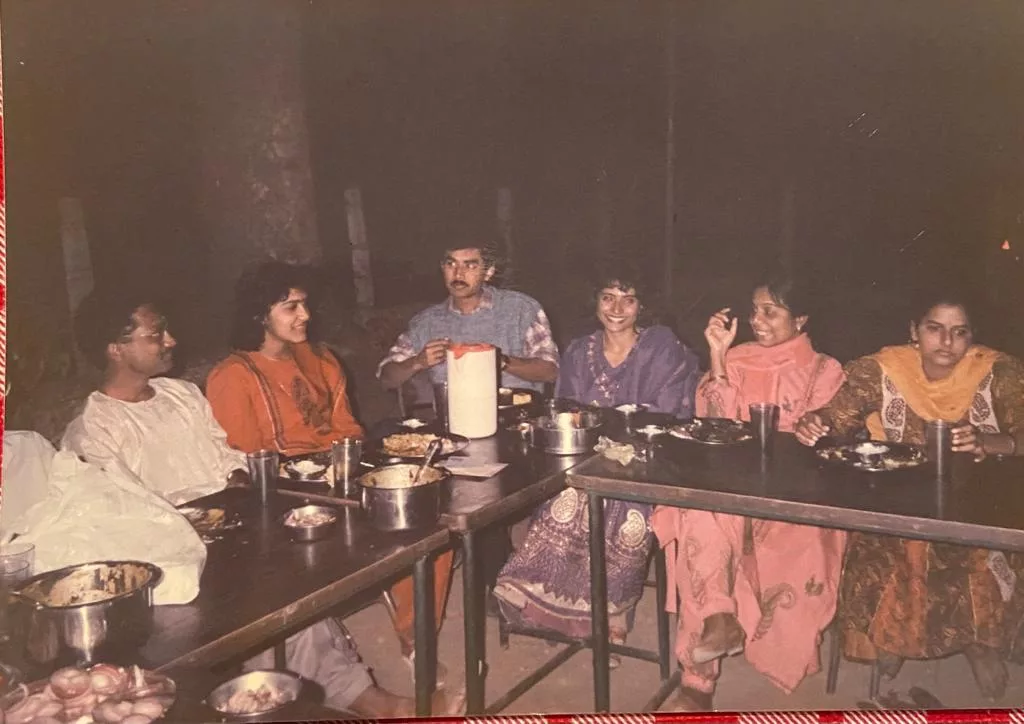
Soon ICH became the favoured destination of all love birds. We, mere mortals, would just gawk at them longingly over our cups of coffee. However, on one exciting day, a very prominent couple had a falling apart. Lots of chinaware lost their lives in this fracas. We, the mute spectators, could just watch with amazement at how a once beautiful couple could turn so vicious and ugly in a moment. The angry girl finally looked witheringly at the hapless guy and asked, “I don’t know what I saw in you?” This is exactly what all of us unfortunate types were asking ourselves over the last few months.
She looked piteously at him and sneered, “There are so many other good-looking and better-behaved gentlemen here.” Immediately, all of us sat up straight in our chairs and flicked imaginary dirt off our cheeks. Though that girl hardly glanced at any of us, all of us hopeful aspirants had passed on the most innocent expressions on our respective faces.
Another thing that I remember ICH for is the bitterly fought elections of the student council. 15 days before the actual elections, even close friends stopped talking to each other because they belonged to different parties. 15 days after the election, this also continued. Later, of course, all this dissolved and the old camaraderie appeared again. But just when the results of the elections were announced, the winning party would hold a grand Tea party in the evening at ICH. It was an occasion for rowdy dancing and raucous singing. Everyone around was offered free cigarettes, whether he was a smoker or not.
When I look back, I am surprised to see so many inanimate places having such a reservoir of memories.
ICH may be long gone and replaced by shiny modern eateries. However, it lives on in the hearts of all of us of that era, who sat there discussing which questions were likely to come in tomorrow’s exams.
*********************************
2
SP Kalantri interviewed several alumni and staff members of ICH, many of whom currently reside in Kerala, and peeped through old records to build up the story…
Reminiscing about the ICH Days
Dr VK Gupta, the Allahabad-based pathologist who graduated from MGIMS in 1980, recalls the ICH days of the late seventies. “In those days, the older students tried to get the attention of the first-year female students. However, the young women were smart and would only accept invitations if they could bring along a few friends, much to the chagrin of the hopeful Romeos, whose wallets and courage were put to the test. The canteen was not only a place to eat but also a popular hangout spot.”
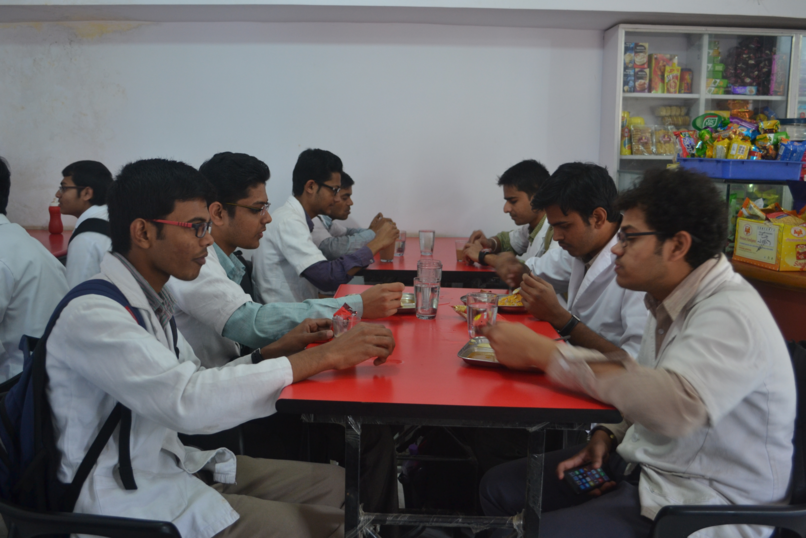
Dr Tarvinder Singh Uberoi, a Nagpur-based pathologist, reminisces about his days as a medical student at MGIMS in Sevagram. As a newcomer, he and his peers were wary of senior students who might subject them to ragging. The ICH became their go-to spot for breakfast as the hostel mess was often a mess in itself and failed to provide palatable meals.
As the years passed, evenings at the ICH became a diverse affair, with some students idling away their time, while others had fun. A unique tradition at the coffee house was that if students from different batches shared a table, the seniors would generously foot the bill. Dr Uberoi remembers an audacious junior from the ’77 batch who would loiter around the open area of the coffee house, trying to catch the attention of seniors. If the seniors took the bait and called him over to rag him, he would endure it willingly. Afterwards, when asked if he wanted anything to eat, he would exploit the generosity of the seniors and order the most expensive item on the menu, enjoying the free meal.
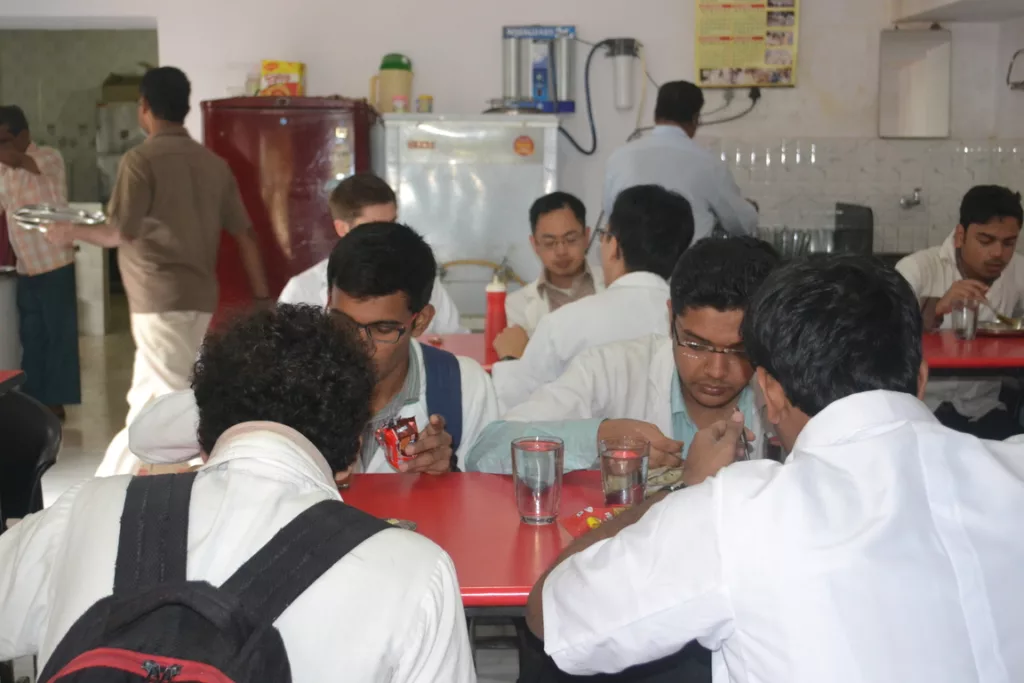
“There was the ever-smiling Balkrishna or BK, and then there were others who were ever-ready to lend a helping hand. Together, they wove a distinctive ambience in the cafe. The staff at ICH were so welcoming and kind that they would often end up staying past the closing time of 10 pm because they didn’t want to leave yet.”
“KP Madhusudanan was from Kerala and belonged to the class of 1977. He started studying at MGIMS just two years after the ICH outlet opened in Sevagram. Madhusudanan became close with the coffee house staff, especially Balkrishna, and often had dinner with them during festivals,” wrote Dr Rakesh Sood, his classmate.
Kindness and Camaraderie: Memories of Mr George Kutty
Mr. George Kutty took over the Indian Coffee House during the winter of ’85. This happened because the ICH cooperative society in Sadar, Nagpur was struggling to keep the business running due to financial issues, and decided to step down. Mr. JKG Kurup, who was the secretary of the society, handed over the canteen to George Kutty.
Interestingly, this wasn’t just a Sevagram problem. Even in Nagpur, the chronic customers of the 50-year-old coffee houses in Sadar and Dharampeth were heartbroken when they had to shut down because of financial difficulties.
But Kutty wasn’t one to give up so easily. He took charge of the Indian Coffee House and completely transformed it into an iconic establishment, providing unparalleled personal service and generosity for the next decade.
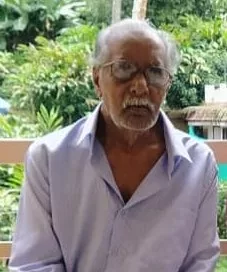
George Kutty began running the canteen on January 1, 1986. To those who knew him, Kutty was the very embodiment of the Indian Coffee House. He had grown up with ICH, having worked with the ICH for almost twenty-five years before he decided to be his own master. A stalwart presence, a tireless worker and a man of the people. An alumnus from the class of ’85, Dr Ragu Krishnan fondly recalls how, with his brother-in-law by his side and his son Santosh in tow, Kutty ran the show with exceptional ease and efficiency. From the kitchen to the front desk, no task was too great or too small for the trio.
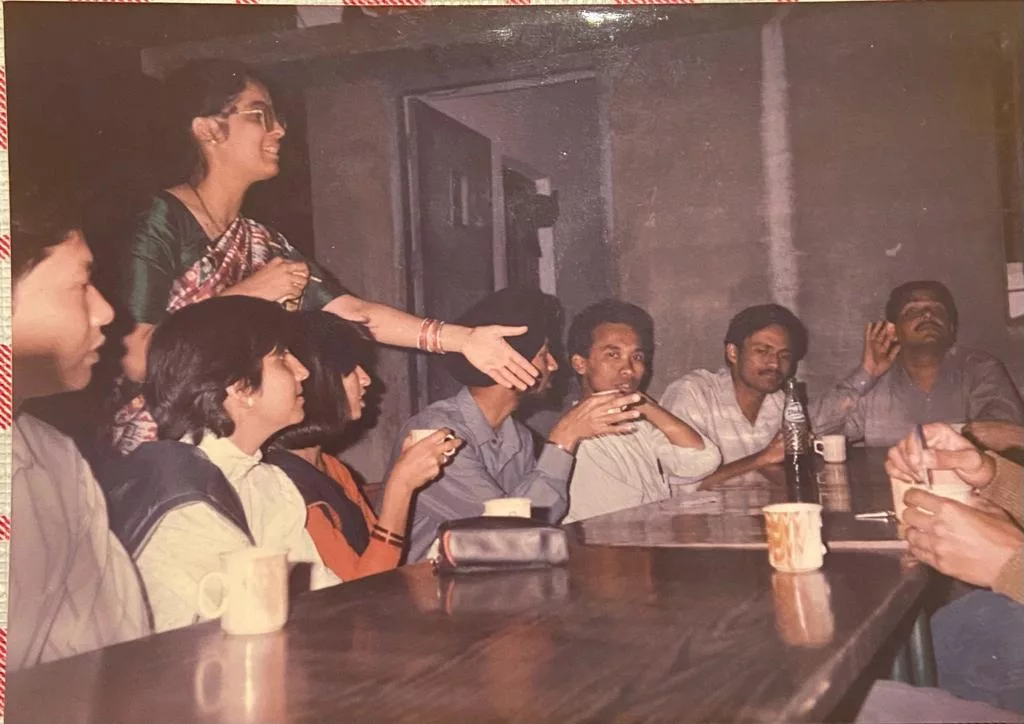
Kutty and his team often ran out of money. But that did not deter them from serving the medical students. He would even go above and beyond by operating the Coffee House for 366 days in a leap year, an effort that earned him the admiration and gratitude of the students.
Yet it wasn’t just their work ethic that endeared Kutty and his team to the medical students. It was their boundless generosity. Dr Devashish Barik of the 1991 batch remembers Kutty’s kindness with great fondness. “He would extend credit to those who couldn’t afford it,” he recalls. ‘It wasn’t about the money for him. For him, the ICH was not a business but a calling. It was about serving the people.”
Despite the changes that came in the late ’90s, the Indian Coffee House remains a cherished part of the college experience for many alumni. Dr Rajnish Joshi, an alumnus from the 1992 batch, recollects the fear he felt when he first entered the Indian Coffee House, a period when the freshers were not allowed to enter the ICH. “Passing by without being called for ragging was a stroke of good luck,” he muses. But over time, he came to appreciate the warmth and camaraderie that permeated the hallowed halls of the Indian Coffee House.
And so, the legacy of George Kutty lives on. A man who dedicated his life to serving others, who embodied the spirit of the Indian Coffee House like no other. “We can only hope that one day we’ll have the chance to thank him for all that he did,” writes Dr Ragu Krishnan.
Back-and-Forth: Kutty and MGIMS’ Correspondence
Each year, the MGIMS management would evaluate Kutty’s performance before deciding whether to extend his contract for another year. The Secretary of the society that runs the medical school, the Dean, the Medical Superintendent of the hospital, the Warden, a few Professors, and the Presidents of the Student Council were among those who would decide Kutty’s fate. Sanjeev Kishore (1984), Sharad Sharma (1986), and Onkar Hossain Roykar (1987)—all presidents of the council—were some students who played a vital role in supporting Kutty’s cause.
Over the course of ten years, Kutty and MGIMS engaged in a stimulating exchange of letters. While the administration often expressed dissatisfaction with the food quality and service efficiency, Kutty consistently responded with well-crafted and neatly typed letters, offering logical explanations for each issue. The students, in turn, strongly supported Kutty and his cooking, which they adored for its delicious taste and the care and warmth he put into every meal.
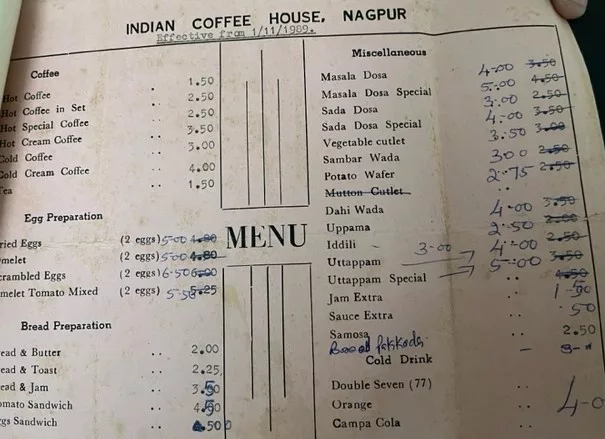
George Kutty also voiced his discontent about what he thought was an unauthorised canteen in the girls’ hostel. “This was not in line with the terms of his contract and was beginning to eat into my business,” he would repeatedly argue. Despite raising the issue with MGIMS, the organisation seemed reluctant to address the problem and opted to remain silent instead.
Kutty was always diligent in paying his monthly rent of Rs 450, and everyone at Sevagram appreciated his responsible behaviour. While there were occasional delays, Kutty always made sure to apologize and ensure that he would not repeat the delay in the future. This continued for ten years without any default in payment, demonstrating Kutty’s reliability and commitment to meeting his obligations.
In 1996, Kutty repeatedly sought permission from MGIMS management to start an STD booth near the Boys’ hostel. MGIMS eventually agreed, but it’s unclear whether his proposal was realised.
Changing Tides: Mahila Mandal Takes Over the ICH Canteen
The year 1997 marked a significant turning point for the canteen space. On 21 June 1997, George Kutty called it a day. It came under the management of Mahila Mandal, a group of women in Sevagram. For the first time in the annals of ICH, women began to handle the counters, making it more inclusive and welcoming to everyone. However, this change also meant that the much-loved Domelette was no longer available, and the ICH featured the same items as the Mahila Mandal canteen in the hospital—poha, bread pakoda, and aloo bonda. As a result, the once-vibrant ICH canteen began to lose its charm.
ICH: A Beacon of Simple Pleasures in a Fast-Food World
The history of ICH in Sevagram is one of dedication and hard work. Four years later, Mahila Mandal realised that running the ICH was not its cup of tea, so it stepped down. The ICH Co-Operative Society of Sadar, Nagpur took over the canteen in July 2002, effectively operating it for five years. Sadly, the canteen had to shut its doors on August 31, 2007, but this marked the beginning of a new chapter as the previous staff returned to keep the coffee brewing.
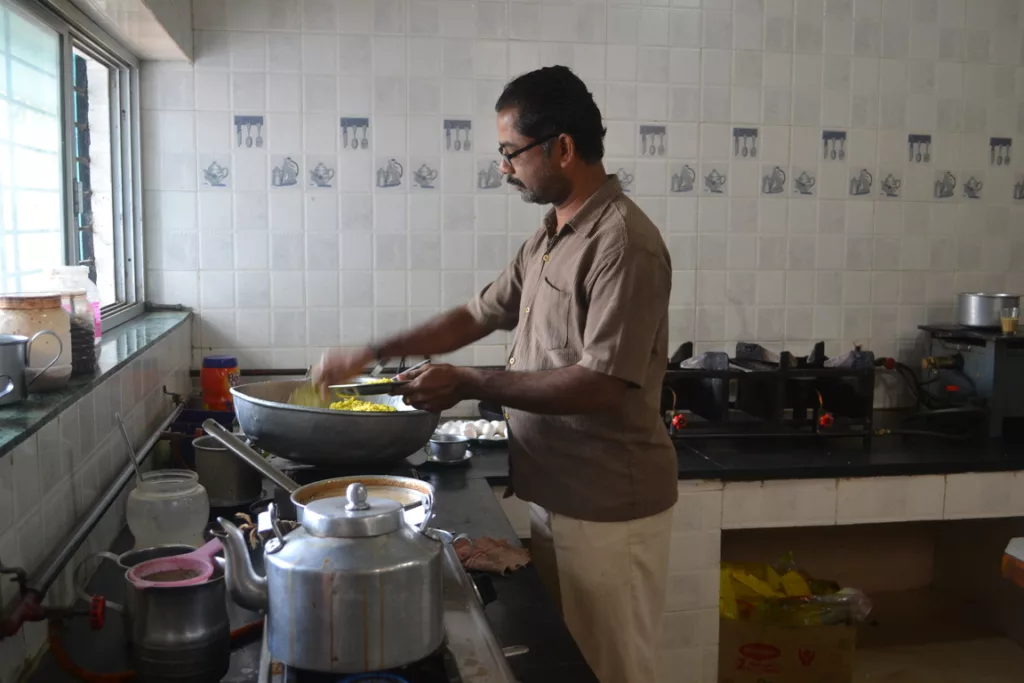
KK Sundaran, a skilled manager, assumed the role of the coffee house’s head in September 2007. With over thirty years of experience at ICH, Sundaran’s expertise was particularly beneficial to the Sevagram coffee house, having joined the Sevagram ICH team in September 1977. Although the Sevagram outlet is no longer under the management of the Coffee House Co-operative Society and has been renamed The Refreshment Coffee House, it remains a cherished part of the MGIMS community.
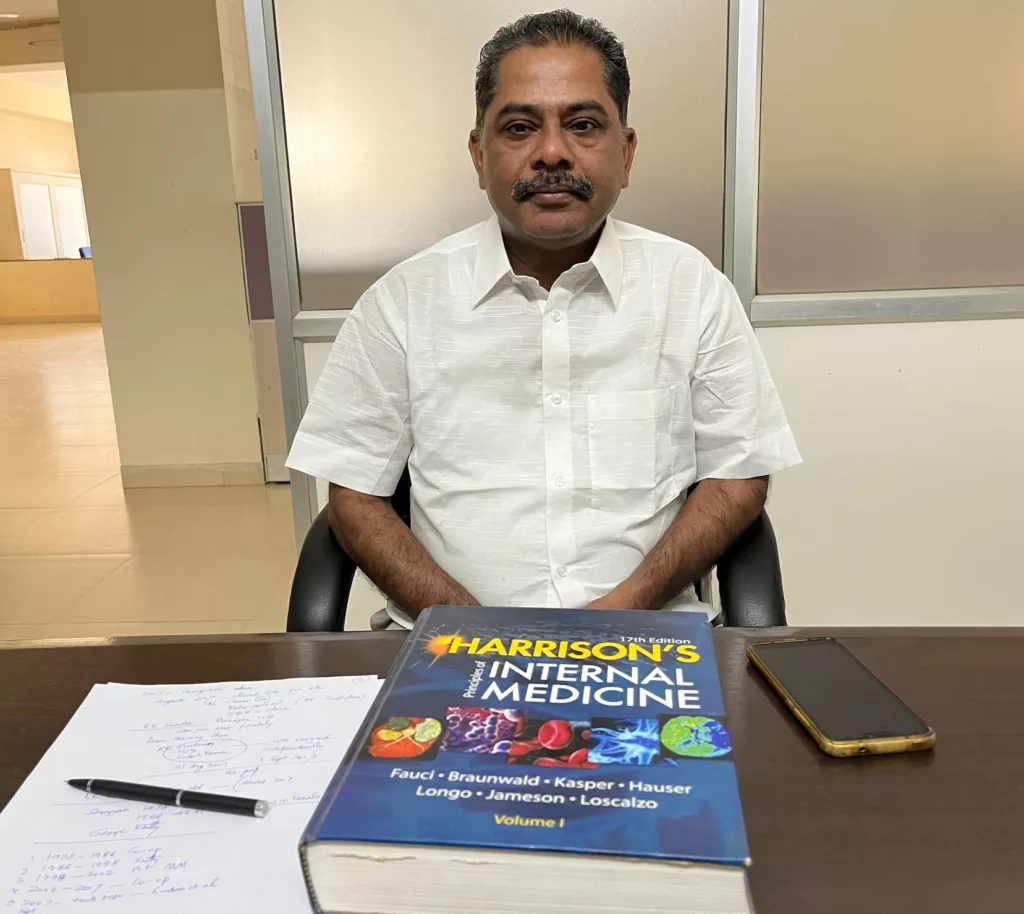
George Kutty, who left Sevagram for Kottayam in 2010 after suffering a stroke in 1998, and KK Sundaran, who retired to his hometown of Thrissur after managing the coffee house for decades, are just two examples of those who have made contributions to the ICH’s legacy.
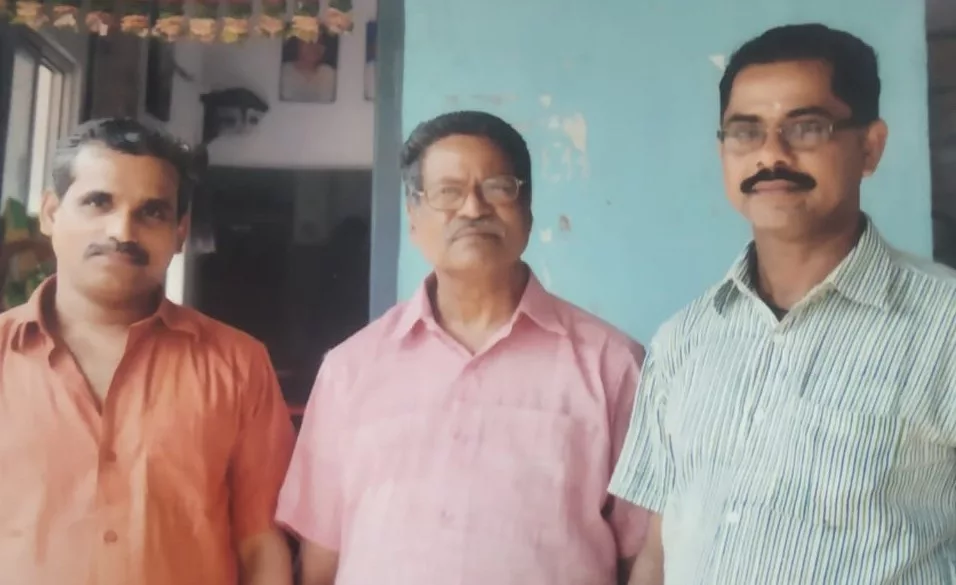
As Vijayakumar wakes up and heads to the coffee house, he knows he has some challenges to overcome. Firstly, the new hostel blocks are situated far from the coffee house. Secondly, breakfast is now being served within the hostels. Thirdly, new eateries have emerged in Sevagram. Lastly, the availability of fast food in Wardha city is a concern, as the ICH cannot offer it.
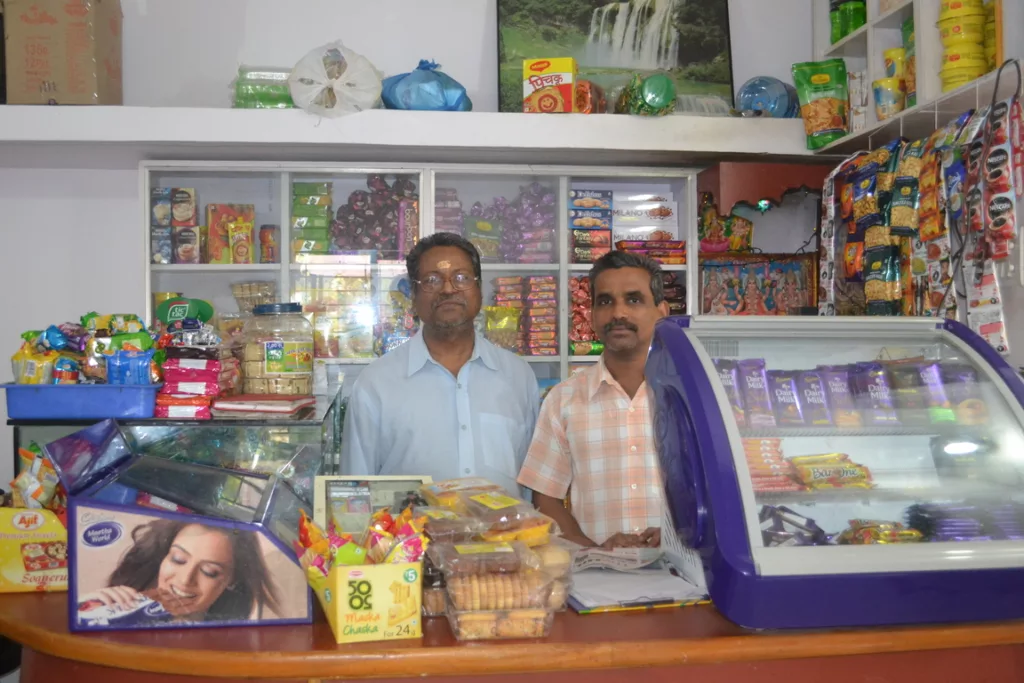
Despite the challenges, the ICH outlet serves medical students and staff with dedication and passion. Vijayakumar takes pride in the outlet’s unbeatable price of just Rs 35 for a dosa, but he also acknowledges the difficulty in resisting the alluring popularity of fast food. However, he remains committed to serving the students and staff with passion and will continue to do so for as long as he can.
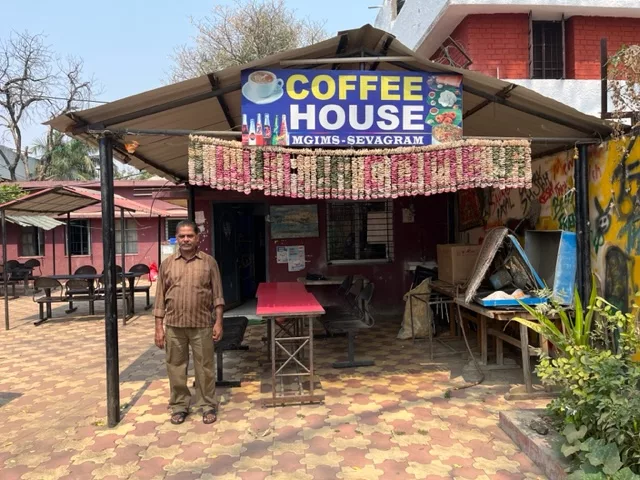
ICH may lack the glitz and glamour of modern cafes, but it holds a special place in the hearts of medical students at MGIMS. It’s more than just a place for coffee and snacks; it’s a place where time seems to stand still and one can enjoy endless hours of chatter over endless cups of coffee. It’s a testament to the efforts of those who have maintained the establishment’s legacy that ICH remains a beacon of community and connection, reminding us of the value of simple pleasures like sharing a cup of coffee with friends.
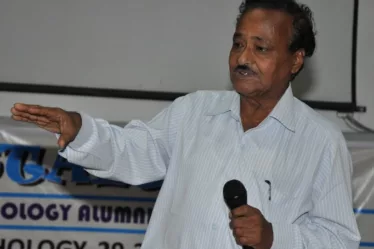
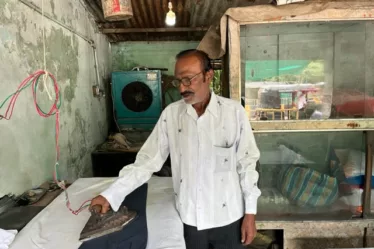
It was a way to survive through PG days when we had breakfast at ICH and invariably missed lunch due to hectic long working hours to end up for dinner at ICH only. Immediately after the Operation theatre day was done, I would rush to ICH for a Masala Dosa and cold or hot coffee. Later reach the wards to work up the new admissions and evening rounds. I have survived rather thrived on ICH. Thanks to the polite, hygienic team with the best catering services in the village like Sewagram. The article was an interesting treat for regular readers like us. Thank you, Sir, once again.
Nostalgia-provoking write-up. We were lucky to experience the original ICH from its birth.
Kutty’s French toast was amazing.
Wonderful write up sir as usual.
Though ICH was very different and not that up to the mark during my batch tenure, it was a vital and very important place for hanging out and snacking (tea and coffee were very ordinary) but that didn’t matter a bit.
The company and cosy, comfortable place close to the hostel (in fact between two hostels 🙂) meant a lot to us,
It was a trip down the memory lane. You have rightly captured the true spirit of ICH despite it’s various avtaars. I still like our old one. I had south Indian dishes at Allahabad but my true love for idli, Vada and upma for breakfast accompanied with hot filter coffee nurtured at ICH. I will love to have a healthy idli and dosa even today for breakfast ( usually available every where,even in Taj). Though I partake tea as really delicious filter coffee is available in Bengaluru only. I thank you for becoming a chronicler of Sewagram of yesteryears. Great 👍
Sir, your excellent write-up has taken us on a nostalgic trip. I would like to mention our batchmate K.P. Madhusoodhan, who was from Kerala. The staff at MGIMS were very fond of him, and he would often be their guest during festivals. Through my close friendship with Madhu, I also learned many Malayali words and phrases from the staff. When we left Sevagram after our PG exams in 1985, they arranged a small farewell party for us.
Your running commentary while writing is fantastic, sir. It takes us back to past memories as if they were events from yesterday.
The memories of Sevagram are unforgettable, especially the blessed places and the delicious dosas, Wada sambar, and Gunee ka juice that we tasted there.